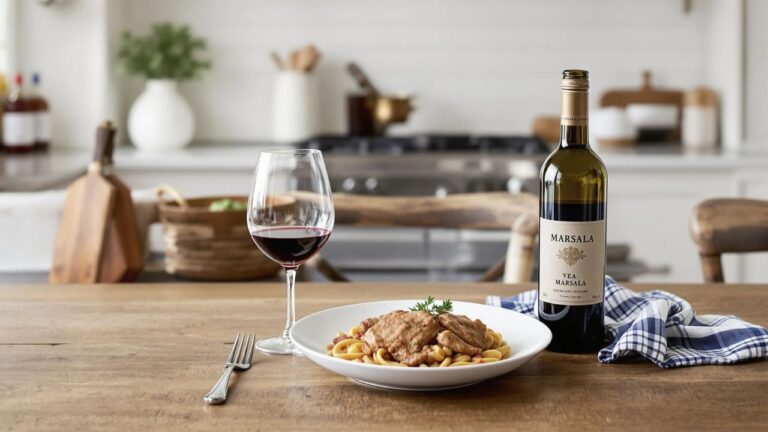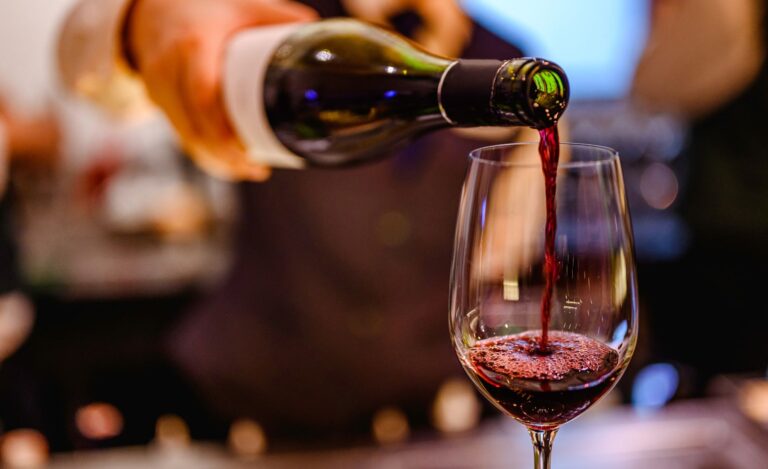Investing In Wine: Why & How To Do It
Investing in wine can unlock a world of potential returns. As the market for fine wines continues to flourish, savvy investors are discovering that this age-old beverage can be a lucrative asset.
You might think investing in wine is reserved for connoisseurs, but it’s more accessible than you think. With a bit of knowledge and the right approach, you can navigate this fascinating landscape.
From understanding the nuances of vintages to recognizing market trends, each step can lead you closer to building a collection that not only delights your palate but also grows in value.
Why Invest in Wine?
Investing in wine is a gateway to a unique and profitable asset class. With the right approach, you can seamlessly blend your passion for exquisite vintages with the potential for significant financial returns.
Historical Performance
Throughout history, wine has proven to be a resilient investment. The market for fine wines has exhibited remarkable stability, with numerous vintages showing impressive appreciation over time.
For instance, iconic Bordeaux wines, such as Château Lafite Rothschild and Château Margaux, have seen their values skyrocket, sometimes doubling or tripling in price within a decade.
This consistent performance stems from a combination of limited supply and growing global demand, making fine wine a sought-after commodity.
The allure of owning a piece of history while watching your investment flourish adds a layer of excitement to this endeavor.
Compared to traditional investments like stocks or real estate, wine can be a unique and potentially rewarding option. It tends to appreciate in value over time, particularly for rare or high-quality bottles. However, it also comes with risks, as the wine market can be volatile, influenced by factors like climate change, market trends, and consumer preferences.
For retirees, wine investment can be appealing as part of a diversified portfolio, but it shouldn’t be relied upon as the primary source of income. It’s more of a long-term investment that requires knowledge and careful selection. Retirees should make sure their other financial needs are met before diving into wine investing and consider working with a specialist to ensure they’re making informed decisions. Like any investment, it’s important to weigh the potential returns against the risks involved.
-Allison Dangle, Tour Operator and CEO of My Travel Pledge
Market Trends
Current trends paint a promising picture for wine investors. Recent shifts in consumer behavior at both local and international levels have led to an uptick in wine popularity, particularly among younger buyers.
With millennials embracing wine culture and increasing their purchasing power, the demand for exclusive and high-quality wines is on the rise. Additionally, the advent of online marketplaces for buying and selling fine wines has made entry into this market easier than ever before.
As a result, you can track emerging trends and identify which bottles are likely to soar in value. Factors such as environmental sustainability and organic farming practices are also influencing consumer choices, creating new opportunities for discerning investors.
By keeping an eye on these trends, you can position yourself to capitalize on a flourishing market ripe for investments.
How to Invest in Wine
Investing in wine can be an exciting journey, blending your passion for this exquisite beverage with the potential for financial gain.
Types of Wine Investments
There are several ways to dive into the world of wine investing, each with its distinct characteristics. Whether you’re a novice or an experienced investor, knowing the various types can help you navigate this unique market.
- Fine Wine: This category consists of high-quality wines that have earned accolades and recognition. Think of labels like Bordeaux and Burgundy, which are synonymous with luxury. Fine wines often appreciate in value over time, making them a golden ticket for serious investors. Certain vintages can soar in price, much like masterpieces in a gallery.
- Collectibles: Some wines are sought after not only for their taste but also for their rarity. Limited edition releases, wines from exceptional years, or bottles with unique labels can become coveted collectibles. Imagine owning a bottle that not only beautifies your cellar but also transforms into a piece of art over time.
- Wine Funds: If you’re looking for a more hands-off approach, wine investment funds may be the way to go. These funds allow you to invest in a diversified portfolio of wines curated by experts. They manage buying, selling, and storing the wines, enabling you to sit back and watch your investment grow without the hassle of direct involvement.
- Wine Futures: Purchasing wine futures means buying wine before it’s officially released. You’re essentially betting on the future quality of a vintage. Like placing a wager on a horse race before the starting gun fires, this strategy can yield significant returns if the wine gains acclaim once it hits the market.
- Storage Options: When you invest in wine, proper storage is key. You can choose to store your bottles at home, which allows for easy access but requires a controlled environment. Alternatively, professional wine storage facilities offer climate-controlled environments that can prevent spoilage, giving you peace of mind. Renting space in a reputable facility can be likened to hiring a bodyguard for your investment; it ensures your asset is safe and sound.
Each type of investment offers unique advantages and challenges. Ultimately, the journey to investing in wine is not just about financial return; it’s about savoring the experience of cultivating a collection that may one day become a legacy.
Choosing the Right Wine
When it comes to wine investing, the selection of the right bottles is key for maximizing your returns. Like choosing the best fruit from a vibrant orchard, investing in wine requires careful consideration of various factors that intertwine to create a fruitful investment.
Factors to Consider
Selecting the right wine involves a careful dance of various elements. Understanding the vintage is your first step; certain years will shine brighter than others.
For example, Bordeaux from 2010 has been hailed for its rich flavors and aging potential. Wines from exceptional vintages tend to appreciate significantly over time, making your investment more likely to yield dividends.
Next, focus on the producer’s reputation. A winery’s history and stature plays a substantial role in determining the value of the wine.
Iconic names like Château Lafite Rothschild often enjoy heightened demand, just like a best-selling novel. Additionally, think about the varietal.
Wines made from renowned grapes, such as Cabernet Sauvignon or Pinot Noir, often have a dedicated following, resulting in greater market interest.
Terroir adds another layer of complexity. This French term embodies the unique combination of climate, soil, and geography influencing the characteristics of the wine.
Wines emerging from prestigious regions like Burgundy or Napa Valley typically command a higher price point and retain their value well. By identifying gems from high-quality terroirs, you position yourself to reap the rewards as demand increases.
Finally, consider market trends and affordability. Keeping a pulse on the fine wine market can reveal emerging trends. Perhaps a newfound interest in organic or biodynamic wines has shifted consumer preferences.
If you align your choices with these trends, you can fill your cellar with wines that not only please the palate but also your wallet. Remember, the aim is to navigate these waters with both passion and prudence.
Like a master chef selecting the freshest ingredients, your investment strategy should combine knowledge with excitement to create a collection that promises both enjoyment and potential profit.
Storage and Maintenance
Proper storage and maintenance are pillars of successful wine investment. Just as a vintage wine matures gracefully in a cellar, your investment grows with the right care and environment.
Creating ideal conditions ensures your bottles not only retain their quality but also enhance their value over time.
Ideal Conditions
To safeguard your collection, you need to recreate the ideal environment reminiscent of an underground wine cellar. Temperature stability is critical; aim for a consistent range between 45°F and 65°F.
Fluctuations can harm the wine, much like a roller coaster ride can jostle someone’s stomach. Humidity levels are another vital aspect—around 70% is optimal.
This prevents corks from drying out and allows an airtight seal, like a loyal fortress protecting your treasures.
Light should be kept at bay as ultraviolet rays can prematurely age your wine. Think of this as shielding your bottles from the sun’s harmful embrace.
Choose a dark storage area or invest in UV-filtered glass if displaying your collection. Likewise, store wine bottles horizontally to keep the cork moist, which preserves the seal and quality.
Keep away from vibrations, as consistent jostling can disturb the delicate balance of aromas and flavors that took years to develop, much like a symphony disrupted by an unexpected sound.
Risks of Poor Storage
Neglecting proper storage can be a recipe for disaster. Imagine investing in a fine Bordeaux only to discover that it has turned to vinegar due to excessive heat.
Exposure to extremes can lead to spoilage and a drastic drop in investment worth. Additionally, wine stored in a damp environment may become tainted with mold, ruining the integrity of the bottle.
The heartbreaking truth is that poor storage can mean that a beloved bottle loses its value overnight, leaving an empty feeling akin to investing in a dream that never takes flight.
Another risk lies in the potential of cork taint, caused by the chemical compound TCA. This can turn an exquisite bottle into a disappointing experience, leaving a bitter taste not just in your mouth but also in your investment portfolio.
Your collection deserves the utmost respect and care—failure to provide it can transform your passion into a lesson learned the hard way. As you embark on this journey of wine investment, maintaining the right storage conditions will let your collection flourish and provide a rich return.
Selling Your Wine Investment
Once you’ve built a diverse collection of fine wines, the time may come when you’re ready to sell. Understanding how to effectively sell your wine investment can significantly enhance your return. Timing and choosing the right platforms are what it’s all about.
Timing the Market
Just as a savvy stock investor waits for the perfect moment to cash in, so too must you gauge the wine market carefully. The value of wine can fluctuate, influenced by factors like global demand, historical auction results, and even economic conditions.
For instance, if you hold a bottle from a celebrated vintage or a renowned producer, it may be wise to monitor prices closely, as their worth often peaks in specific seasons or during wine events.
Timing can also relate to your personal situation; perhaps you’re ready to liquidate some assets to fund a new venture. Consider selling when market trends favor collectors, as fine wines often appreciate when interest surges—much like the bloom of a flower in spring.
Ultimately, being attentive to these cycles will help you maximize your investment’s yield.
Platforms for Selling
Choosing the right platform to sell your wine can make all the difference. You have several options, each with its pros and cons.
Auction houses, for instance, can lead to competitive bids and potentially sky-high returns. However, they typically charge hefty commissions.
Online marketplaces like WineBid and Vivino offer an accessible alternative, connecting you directly with buyers without the middleman, although you may not always fetch the highest price.
These platforms empower you to showcase bottles to global audiences, akin to casting a wide net in a bountiful sea.
For those with a refined collection, considering a specialized wine broker might be beneficial. Brokers possess industry connections and can negotiate on your behalf, ensuring you receive a fair market price.
This route may have a cost, yet the expertise they offer can be invaluable.
Whichever route you choose, ensure it aligns with your goals and the particular wines you own. Each platform presents unique opportunities, and knowing how to navigate them can help you achieve the returns you deserve.
Pros and Cons of Investing in Wine
Investing in wine can be a double-edged sword. While it certainly presents unique opportunities, it also comes with its share of challenges. Understanding both sides is key for making informed decisions.
Advantages
One of the primary advantages of investing in wine is its potential for high returns. Much like a fine vintage that improves with age, certain wines appreciate significantly over time.
Take the Bordeaux region as an example; renowned vintages can see value increases of up to 500 percent. This market trend speaks volumes about the profitability potential available to savvy investors.
Additionally, wine as an asset class is relatively low in correlation with traditional markets, such as stocks and bonds. This means that when the stock market falters, fine wine investments might remain stable or even grow.
Your wine collection can serve as a safeguard against economic downturns, protecting your wealth while satisfying your passion for exquisite beverages.
Another benefit lies in the sheer enjoyment that accompanies this investment. Unlike purchasing stocks or bonds, you can immerse yourself in the world of wine—attending tastings, learning about terroir, and exploring various regions.
Each bottle represents a story waiting to be savored, creating a richer experience that transcends mere financial gain.
Finally, the increasing interest from younger generations in luxury products, including fine wines, provides an expanding market.
This demographic shift involves not just a desire for consumption but an appreciation for investment, meaning today’s purchase could yield tomorrow’s treasure.
Disadvantages
On the flip side, investing in wine is not without its pitfalls. For one, the market can be notoriously unpredictable, resembling a roller coaster ride with unexpected drops and ascents.
Factors such as climate change, changing consumer preferences, and global crises can dramatically influence wine values, making it essential for you to remain vigilant.
Storage and maintenance present another hurdle. A wine investment is only as good as its conditions. If improperly stored, your sought-after bottles may spoil or lose their value—like a beautiful painting left in the sun.
The costs associated with proper storage—such as climate-controlled facilities or humidors—can add up, impacting your overall return on investment.
Moreover, unlike stocks, wine is not a liquid asset. Selling your collection can take time and effort, especially if you aim to maximize your returns.
Choosing the right platform for selling—be it an auction house or an online marketplace—requires careful research and consideration.
Finally, there is a steep learning curve when it comes to identifying which wines to invest in. With countless varietals, producers, and vintages to consider, it can feel overwhelming, akin to navigating a maze.
Making uninformed decisions, like investing in a high-profile but poor-quality wine, can lead to disappointing outcomes.
By weighing these pros and cons, you can make informed choices that align with your financial goals and personal passions in the captivating world of wine investment.
Comparison with Other Investments
When considering wine as an investment, it’s essential to explore how it stacks up against traditional asset classes.
Each investment type carries its own set of advantages and challenges, creating a rich tapestry of choices for you to navigate.
Real Estate
Investing in real estate often feels akin to planting a tree that can grow and bear fruit over the years. Much like wine, properties appreciate over time, but the process can be slow and riddled with challenges.
While real estate offers the stability of tangible assets, you face hurdles like market fluctuations and maintenance costs for properties, which can drain your resources.
Unlike wine, which relies on careful management and a passion for vintage selection, real estate demands an understanding of local markets and demographic trends. Notably, wine acts as a hedge against inflation, whereas real estate is often vulnerable to economic downturns.
Investing in wine can offer a unique opportunity compared to traditional investments like real estate or stocks. Wine, especially rare bottles and vintages, tends to appreciate over time, but it’s a more niche market and can be volatile. Unlike real estate or stocks, wine doesn’t generate regular cash flow, and its value is largely based on rarity, storage conditions, and demand, which can fluctuate.
For retirees, wine could be a good way to diversify a portfolio, but it’s not a primary investment option. It’s a more long-term play that may take years to see a substantial return. Retirees should be cautious, making sure their primary financial needs are met with more stable investments, like real estate or bonds, before diving into wine investing. If they’re interested, it’s best to invest with a wine expert who can guide their choices.
-Vlad Plotnikov, Real Estate Investor at Sell House Las Vegas Nevada
Stocks and Bonds
Stocks and bonds dance to a different rhythm, representing the fast-paced heartbeat of the financial markets. They can offer quick gains and instant liquidity, much like a sudden splash of wine filling a glass.
However, these instruments can also be unpredictable and volatile, susceptible to market whims and global events. When investing in wine, you engage with a more personal and emotionally rewarding asset.
Investors in stocks often ride the ups and downs of the market—a roller coaster of emotions—while those who invest in wine can savor their collection over time, combining enjoyment with the potential for solid returns.
Moreover, fine wine tends to have a low correlation with stock market movements, providing a refreshing diversification strategy.
Gold and Precious Metals
Investing in gold and precious metals can feel like holding a piece of the earth’s wealth in your hands, exuding a timeless allure. These commodities have long been considered safe havens during economic turbulence.
Unlike wine, which requires care and attention to maintain its quality and value, precious metals are simpler to store and don’t require the same level of environmental care.
That said, fine wines can appreciate significantly more depending on vintage quality, making them particularly attractive. While gold shines in moments of crisis, the romance of a well-curated wine collection can elevate your investment experience, combining passion with profit.
Investing in wine can be a unique and potentially profitable alternative investment, but it comes with its own set of risks. Unlike stocks or bonds, wine’s value can appreciate over time due to rarity and quality, especially fine wines from renowned regions. However, wine investment is less liquid, meaning it can take longer to see a return and can be affected by factors like market trends and storage conditions. For retirees, I wouldn’t recommend putting a large portion of their portfolio in wine. It could be a good diversification strategy as a small part of a broader investment plan, but traditional, stable assets like gold or bonds are likely a safer bet for long-term retirement security.
-Tim Schmidt, Investment Advisor and Marketing Strategist at Gold IRA Custodians
Bitcoin and Other Crypto
Bitcoin and other cryptocurrencies burst onto the scene like an unexpected vintage, enticing younger investors with the allure of high returns. These digital assets are highly volatile, fluctuating wildly in value from day to day, much like a young wine that hasn’t yet revealed its true potential.
In contrast, wine investments tend to follow a more gradual trajectory, revealing their richness and depth over time. While cryptocurrencies can deliver exhilarating profits at lightning speed, they come with the specter of great uncertainty, similar to diving into uncharted waters without a life vest.
Investing in wine offers you the chance to immerse yourself in a craft and culture that has stood the test of time—providing both a tangible asset and the joy of discovery.
Conclusion
As you step into the fascinating world of wine investment, you’re embracing more than mere bottles; you’re potentially unlocking a treasure trove of financial prospects.
Navigating this realm requires you to cultivate a blend of passion and acumen, much like a skilled vintner tending to their grapes. By digging into the intricacies of vintages and understanding market dynamics, you can transform your fascination into a rewarding financial journey.
Your choice to invest in fine wines offers a unique avenue for wealth generation. The allure of notable estates, such as Château Lafite Rothschild and Château Margaux, demonstrates the historical resilience wine can exhibit.
With current trends favoring fine wines, especially among younger aficionados who prioritize sustainability, your entry into this market may align perfectly with a forward-thinking mindset.
When considering your options, reflect on various ways to invest. Fine wines and collectibles present distinct choices, while wine futures and investment funds offer supplementary paths to enhance your portfolio.
Yet, it’s imperative to grasp the nuances of proper storage, as safeguarding your treasures could mean the difference between profit and loss.
You might find yourself torn, weighing the vibrancy and allure of fine wine against the more conventional investment arenas. While stocks and real estate provide their own merits, they often carry hidden complexities like market volatility and maintenance nightmares.
In contrast, the intimacy of wine investing fosters enjoyment and passion, turning each bottle into an emotional asset rather than a mere commodity.
However, be mindful of the challenges that accompany this investment landscape. The unpredictability of the market can feel like navigating a ship through stormy waters.
You must prepare for a learning curve that requires diligence and a keen eye for quality. Embracing these hurdles may lead you to extraordinary rewards, turning your wine cellar into an enviable portfolio.
In this exhilarating pursuit, you’ll find that wine investment is not just about monetary gain. It is also about cultivating a deeper appreciation for the art and science behind every sip. So as you embark on your wine investment voyage, remember to pair your financial acumen with a genuine passion for this enchanting craft. Your journey promises to be as rich and rewarding as the finest vintage.





